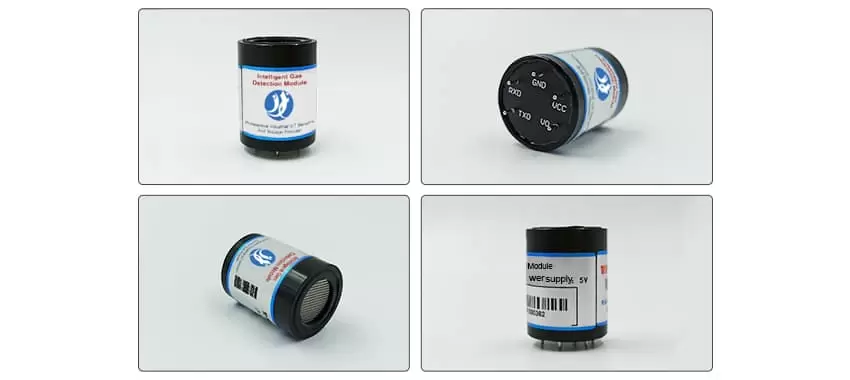Environmental monitoring plays a crucial role in assessing and maintaining the quality of our surroundings. One key aspect of this monitoring is the detection and analysis of various gases present in the atmosphere. With the advancements in gas sensor technology, we are witnessing significant improvements in the accuracy, sensitivity, and efficiency of environmental monitoring systems. In this article, we will explore the recent advancements in gas sensor technology and discuss how it is enhancing environmental monitoring.
Importance of Environmental Monitoring
Environmental monitoring is essential for several reasons. It helps in understanding the impact of human activities on the environment, assessing air quality, detecting hazardous substances, and ensuring workplace safety. By continuously monitoring the presence and concentration of different gases, we can gain valuable insights into environmental changes and take necessary actions to mitigate any potential risks or pollution.
Evolution of Gas Sensor Technology
Gas sensors have come a long way since their inception. Early gas sensors were bulky, limited in functionality, and had low sensitivity levels. However, technological advancements have led to the development of highly sensitive, portable, and advanced gas sensors.
One significant advancement is the miniaturization of gas sensors. Miniature gas sensors are now compact, lightweight, and widely used in various applications. They can be integrated into wearable devices, mobile phones, and even drones, enabling real-time monitoring of gas concentrations and providing instant alerts when abnormal levels are detected.

Another breakthrough is the use of nanotechnology in gas sensors. Nanomaterials, such as nanowires, nanoparticles, and nanocomposites, have unique properties that enhance the performance of gas sensors. They offer high sensitivity, selectivity, and stability, enabling the detection of gases at very low concentrations.
Moreover, the integration of gas sensors with wireless communication technologies and the Internet of Things (IoT) has revolutionized environmental monitoring. These connected gas sensors can transmit data to a central monitoring system, allowing continuous monitoring of multiple sites simultaneously. This real-time data helps in making timely decisions, identifying pollution sources, and taking appropriate measures to improve environmental conditions.
Applications of Advanced Gas Sensors
The advancements in gas sensor technology have expanded the applications of environmental monitoring. Let's explore a few key areas where these sensors are making significant contributions:
3.1 Air Quality Monitoring:
Gas sensors are extensively used to monitor air quality in urban areas. They can detect pollutants such as carbon monoxide (CO), nitrogen dioxide (NO2), ozone (O3), and volatile organic compounds (VOCs). By continuously monitoring the air quality, authorities can identify pollution hotspots, implement measures to reduce emissions, and improve public health.
3.2 Industrial Safety:
Gas sensors are crucial in ensuring workplace safety, especially in industries where exposure to toxic gases is a concern. These sensors can detect gases like ammonia, chlorine, hydrogen sulfide, and methane, providing early warning signs in case of gas leaks or hazardous conditions. By integrating gas sensors into safety systems, companies can prevent accidents, protect workers, and comply with safety regulations.
3.3 Environmental Compliance:
Industries often have to comply with strict environmental regulations and emission standards. Gas sensors help in monitoring stack emissions, fugitive emissions, and ambient air quality, ensuring compliance with environmental regulations. By accurately measuring and continuously monitoring gas emissions, companies can take necessary actions to reduce their environmental footprint and maintain regulatory compliance.
3.4 Agriculture:
Gas sensors are also used in agriculture to optimize fertilization processes and detect changes in soil conditions. For example, sensors can measure the concentration of gases like carbon dioxide and methane in the soil, indicating the presence of anaerobic conditions that can affect crop productivity. By analyzing these gas levels, farmers can adjust irrigation and fertilizer application, leading to improved crop yields and resource efficiency.
Future Directions and Challenges
While advancements in gas sensor technology have revolutionized environmental monitoring, there are still challenges to overcome. Some of these challenges include:
4.1 Sensor Calibration:
Gas sensors require regular calibration and maintenance to ensure accurate readings over time. Developing automated calibration methods and improving long-term stability are areas that need further research and development.
4.2 Selectivity and Cross-Sensitivity:
Gas sensors should be able to distinguish between target gases and other interfering substances prese
 : +86 155 8830 2704
: +86 155 8830 2704 : jxdziot@gmail.com
: jxdziot@gmail.com
